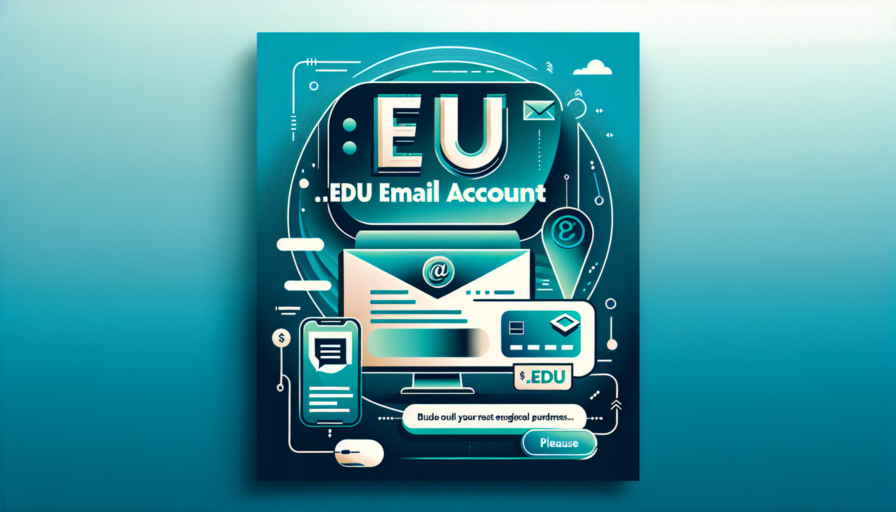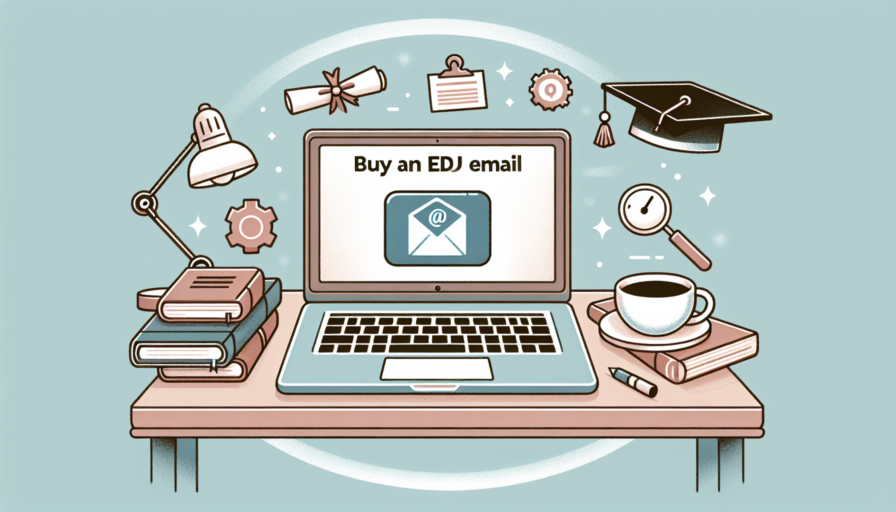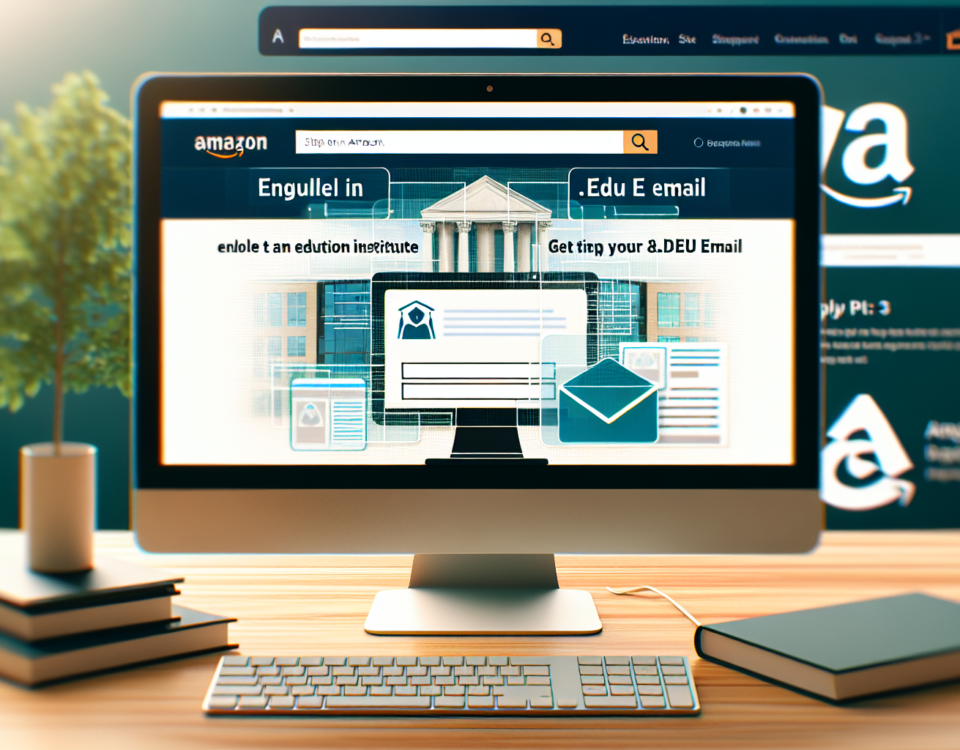
Unlock Academic Discounts: The Ultimate Guide to Getting Your EDU Student Email
February 15, 2024
Edu Outlook 2023: Trends, Forecasts, and What It Means for Educators
February 15, 2024` headings designed to create an article around the keyword “login to edu email,” addressing different aspects to match the user’s search intent and enhance SEO.
“`html
How to Login to Your EDU Email Account: Complete Guide
Are you facing challenges while trying to login to your edu email account? Whether you are a new student or an existing one, this guide will walk you through the process, provide helpful tips, and ensure you can access your educational email services without a hitch.
Login to EDU Email – Step by Step Guide
Getting access to your educational email account should be a straightforward process, but sometimes it can get a bit tricky. Before anything else, ensure you have your username and password ready. Institutions typically provide these credentials upon admission or enrollment. If you’re a first-time user, you may also need to activate your account through a separate portal before logging in for the first time.
To start the login process, navigate to your institution’s official email login page. This URL is usually provided along with your credentials or can be found on the school’s website, often under a “Current Students” or “Email Access” section. Once you’re on the login page, enter your username—often your student ID or school-provided email address—and the password associated with your account. If you’re unable to locate the proper login URL, a quick search for “login to [Your School Name] edu email” should direct you to the right page.
After entering your credentials, click the login or sign in button. First-time users may be prompted to change their password or set up security questions—an essential step to secure your account against unauthorized access. In case you have forgotten your password, look for a “Forgot Password” or “Trouble Signing In?” link, which will guide you through the steps to reset your password. Most educational institutions have a helpdesk or IT support service for assistance if you run into any issues during the login process.
While most edu email systems work seamlessly on various browsers, some may recommend using a specific browser for the best experience. If you encounter any browser-specific problems, it might be worthwhile to switch to another one or clear your browser’s cache and cookies. Remember to always log out from your email account especially when using public or shared computers to maintain the security of your educational communications and personal data.
Troubleshooting Common Login Issues with EDU Emails
Encountering login issues with EDU email accounts can be a frustrating barrier to accessing academic resources and communication platforms. These specialized email addresses, designated for members of educational institutions, often have unique problems distinct from typical email services. The key to resolving these issues is to identify the root cause, which might range from password complications to account restrictions set by the educational entity.
Resetting Forgotten Passwords
One of the most frequent causes of login issues with EDU emails is a forgotten password. It’s essential for users to follow their institution’s password reset protocol, typically found on the login page. Institutions usually employ a multi-factor authentication system that may involve sending a password reset link to an alternate email or sending a unique code to the user’s mobile device. Sometimes, you might be asked to answer security questions to verify your identity. Be sure to check for such links or text inputs, and proceed with the method that best suits your recovery options.
Verifying Account Status and Permissions
Another aspect crucial to troubleshooting could be the status of your EDU email account. Students, faculty, or staff might face issues if their account has been disabled or restricted due to inactivity, graduation, or employment status changes. Typically, institutions provide a grace period after you leave the institution before deactivating your account. To resolve such issues, you may need to contact your educational institution’s IT support team. They can inform you about the status of your account and provide guidance on reactivation, if possible. It’s important to maintain updated contact information to receive timely notifications regarding any changes to your account’s status.
Clearing Browser Cache and Cookies
At times, the problem may not be with your EDU account, but with your browser. Cached data and cookies can sometimes interfere with the login process. Clearing your browser’s cache and cookies can resolve these issues and is a recommended step in the troubleshooting process. After clearing this data, attempt to log in again. Additionally, try accessing your EDU email through a different browser or incognito mode to rule out browser-specific issues. This troubleshooting step is often overlooked but can be the simple fix needed to gain access to your educational email account.
Securing Your EDU Email Account
Education-based email accounts (.edu) are highly coveted due to their access to a plethora of educational resources and discounts. However, the value they hold also makes them a target for cyber threats. Understanding the importance of securing your EDU email account is crucial in safeguarding your personal data and the educational institution’s network. Implementing strong passwords and changing them regularly can prevent unauthorized access.
One effective measure to enhance the security of your EDU account is to enable two-factor authentication (2FA). This added layer of security requires not only a password and username but also something that only the user has on them, such as a physical token or a mobile phone application-generated code. Engage this feature to ensure that even if your password were to be compromised, the chances of a security breach can be significantly minimized. Moreover, being vigilant about phishing attempts, which often aim to trick users into revealing login credentials, is equally essential. Recognize red flags such as unsolicited emails requesting account details or unusual login alerts.
It’s also vital to keep the devices through which you access your EDU account secure. Regular software updates and anti-virus protection can shield your account from vulnerabilities that hackers might exploit. Additionally, using a Virtual Private Network (VPN) when accessing your EDU email on public Wi-Fi can provide an essential layer of encryption, keeping your email communications private and secure from potential eavesdroppers. Remember that the security of your EDU account is not just about the direct login details but also about protecting the channels through which you access your email.
Best Practices for Password Management
- Use a combination of uppercase, lowercase letters, numbers, and special characters in passwords.
- Avoid using easily guessable information such as your name, birthdate, or “password” as your password.
- Consider using password managers to generate and store complex passwords.
- Never reuse passwords across different accounts and services.
Recognizing Phishing Attempts
- Be skeptical of emails that ask for personal or account information.
- Check the sender’s email address for legitimacy; be wary of suspicious or mismatched domains.
- Do not click on links from unknown sources. Always verify the authenticity of the request by contacting the institution directly.
- Report any suspicious emails to your educational institution’s IT department.
Benefits of Having an EDU Email Account
An EDU email account is not just a means of communication for students and educators; it’s a key that unlocks a treasure trove of benefits and discounts. Owning such an email account is synonymous with being part of an academic institution, and because of this, numerous companies and services proffer exclusive offers that are only accessible to educational email holders. Understanding these perks is essential for those who have the privilege of an EDU email address.
Firstly, one of the most enticing benefits is access to academic software discounts. Vendors like Adobe, Microsoft, and Autodesk offer substantial price reductions on their software for users with an EDU email. This means students and educators can utilize professional-grade tools for a fraction of the cost, which can be particularly beneficial for those in fields that rely heavily on these programs for their studies or research. The value of such discounts should not be underestimated, as they can alleviate the financial strain on those looking to advance their skills with industry-standard software.
Additionally, an EDU email account often serves as a gateway to cloud storage solutions. Various providers like Google Drive and Microsoft OneDrive offer enhanced storage capacities to educational users at no extra cost. This increased storage space is invaluable for backing up important academic work, enabling collaboration on team projects, and facilitating the sharing of large files without the worry of hitting storage limits. Again, this is a benefit that can lead to substantial savings as comparable cloud storage plans can come with a hefty price tag for non-EDU account holders.
Beyond software and storage, holding an EDU email address can lead to savings on entertainment and informational services. Streaming platforms, such as Spotify and Amazon Prime, provide discounted rates or extended trial periods. Similarly, numerous online news outlets and scholarly databases may grant complimentary or reduced-price access to those with an educational institution’s email. These entertainment and informational resources contribute not only to the leisure time of students and faculty but also support the academic research process and ongoing education.
FAQs on EDU Email Login
Navigating the intricacies of accessing educational email accounts can sometimes seem daunting for students, educators, and academic professionals alike. This section aims to streamline the process by addressing the most common queries associated with .edu email logins.
What Is the Standard Procedure for Logging into an EDU Email Account?
Typically, educational institutions have a web-based platform where students and staff can securely log in to their EDU email accounts. The process involves entering your designated username, which may be your student identification number or a derivative of your name, along with a password that you’ve set or been provided. It’s crucial to ensure that you’re on the correct login page, which is often found on your school’s official website or by direct link provided via orientation materials.
How Can I Retrieve My EDU Email Login Credentials if I’ve Forgotten Them?
Forgetting login details is common, but most educational email systems have recovery options in place. Look for a ‘Forgot your password?’ link on the login page. You’ll be prompted to enter your recovery email or answer security questions. If you’re unable to reset your password through these means, contacting the IT helpdesk or student support services of your institution is the recommended course of action. They can typically verify your identity and help you regain access to your account.
Are There Login Differences Between On-Campus and Remote Access?
Accessing your EDU email from off-campus may require additional steps for security purposes. Institutions often use Virtual Private Networks (VPNs) or two-factor authentication to ensure the safety of accounts when accessed remotely. It’s advisable to check with your institution’s guidelines or consult with the IT department to understand any additional requirements that may be necessary when you’re not on campus.







